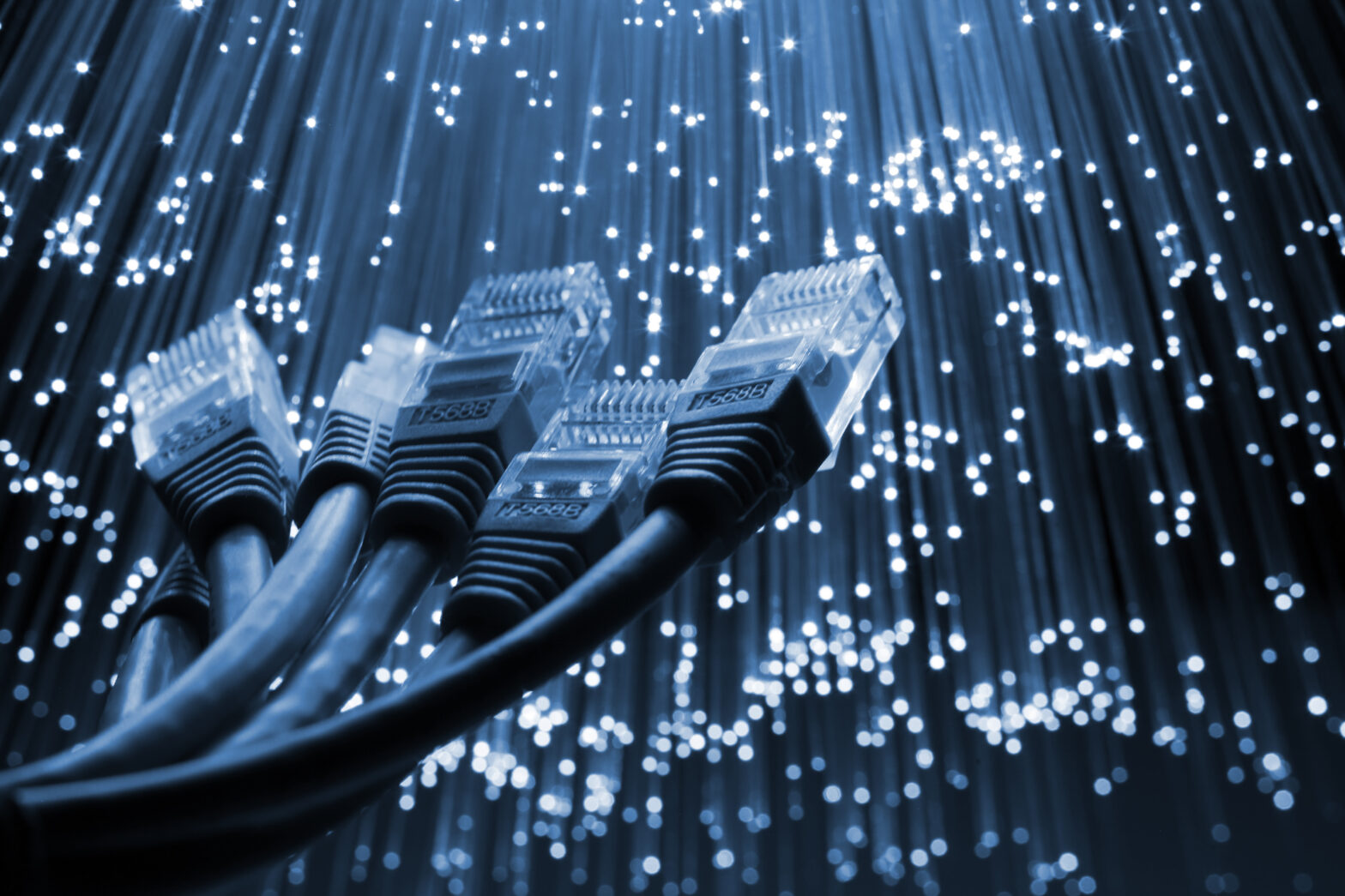In today’s day and age the majority of businesses, regardless of size, rely on the internet for their day-to-day operations. However, with a staggering choice in connectivity options, it can be difficult to choose the solution that will best fit your organisation’s requirements.
While broadband may be adequate for basic activities such as sending email and browsing the web, if your business relies on internet for cloud services, VoIP calling or video conferencing it may be time to consider a faster and more reliable solution – Ethernet.
What are the different types of Ethernet?
There are numerous types of Ethernet connection available, the three most common being Fibre Ethernet, Ethernet over Fibre-to-the-Cabinet (EoFTTC) and Ethernet First Mile (EFM). We’ll take a look at the different solutions, how they work and how Ethernet could benefits your business.
Fibre Ethernet comprises a fibre connection that runs from the network directly to your premises offering unparalleled speed and reliability. It is even accessible in areas where Fibre-to-the-Cabinet (FTTC) broadband is not yet available, so location is less likely to cause an issue.
EoFTTC works in a similar way to FTTC; the signal travels from the exchange to a street cabinet via fibre optic cables, but whereas with FTTC the connection from the cabinet to your business premises is made using copper cables, EoFTTC uses fibre cables to complete the circuit. As a result of the increased availability of fibre, EoFTTC is now accessible throughout most of the UK which makes it a popular option.
Lastly, we have EFM, which is an end-to-end Ethernet solution delivered over multiple copper wires and connects your business premises directly to the network. This option is great for businesses that need speed and reliability and can predict their future data requirements.
Businesses that operate over multiple sites may wish to consider a point-to-point solution for transferring large amounts of data securely. For example, businesses dealing with confidential information such as bank details, health records and so on may choose point-to-point for its speed and for the fact that it doesn’t break out to the internet so is more secure than other methods of data transfer.
The business benefits of Ethernet
Ethernet connectivity can offer many benefits to a business, but the first we’ll look at are service-level agreements. With any Ethernet connection your supplier should offer robust service level agreements, which means that should you experience any issues or loss of connection, an engineer would visit your premises to get you back up and running as a priority.
Another huge benefit of Ethernet is that it is a dedicated connection; meaning that it is for the sole use of your business and cannot be accessed by any other parties. No contention means you will receive the speeds you agreed with your service provider at all times, which is particularly useful if your operations rely on cloud services or if you’re running servers that need to be accessed from multiple sites.
Ethernet offers symmetrical upload and download speeds which makes transferring large amounts of data and files much faster than with a broadband connection, and with so many businesses now heavily reliant on cloud applications and services for critical operations, this is definitely an advantage.
Ethernet vs Broadband
Of course, an Ethernet connection is simply not necessary for some smaller businesses and start-ups. If your business’ internet requirements are limited to browsing the web, sending and receiving emails and other activities that do not need a huge bandwidth then you may wish to consider a fibre broadband connection.
Fibre-to-the-Cabinet (FTTC) is a popular choice for businesses today. It works by running fibre optic cables from the telephone exchange through to a street cabinet, the signal then connects to your business premises via traditional copper cables.
FTTC offers higher speeds than traditional ADSL broadband and is a relatively low-cost solution. However, even business-grade fibre broadband is shared between multiple businesses so it is important to consider whether slower speeds during peak times will have an impact on your business operations.
Another point to consider is lead time for installation. Whereas FTTC can usually be installed relatively quickly, subject to availability, Ethernet installation can take a number of months to complete so it is not a quick fix to solve any immediate connection issues.
Ultimately, business connectivity is is a personal decision based on many factors, but in the modern world where a good connection is critical for keeping most organisations running it is certainly something that needs careful consideration.
Lucy Whitaker is marketing executive at Daisy SMB Services.





